Health and WellbeingKeeping The Balance
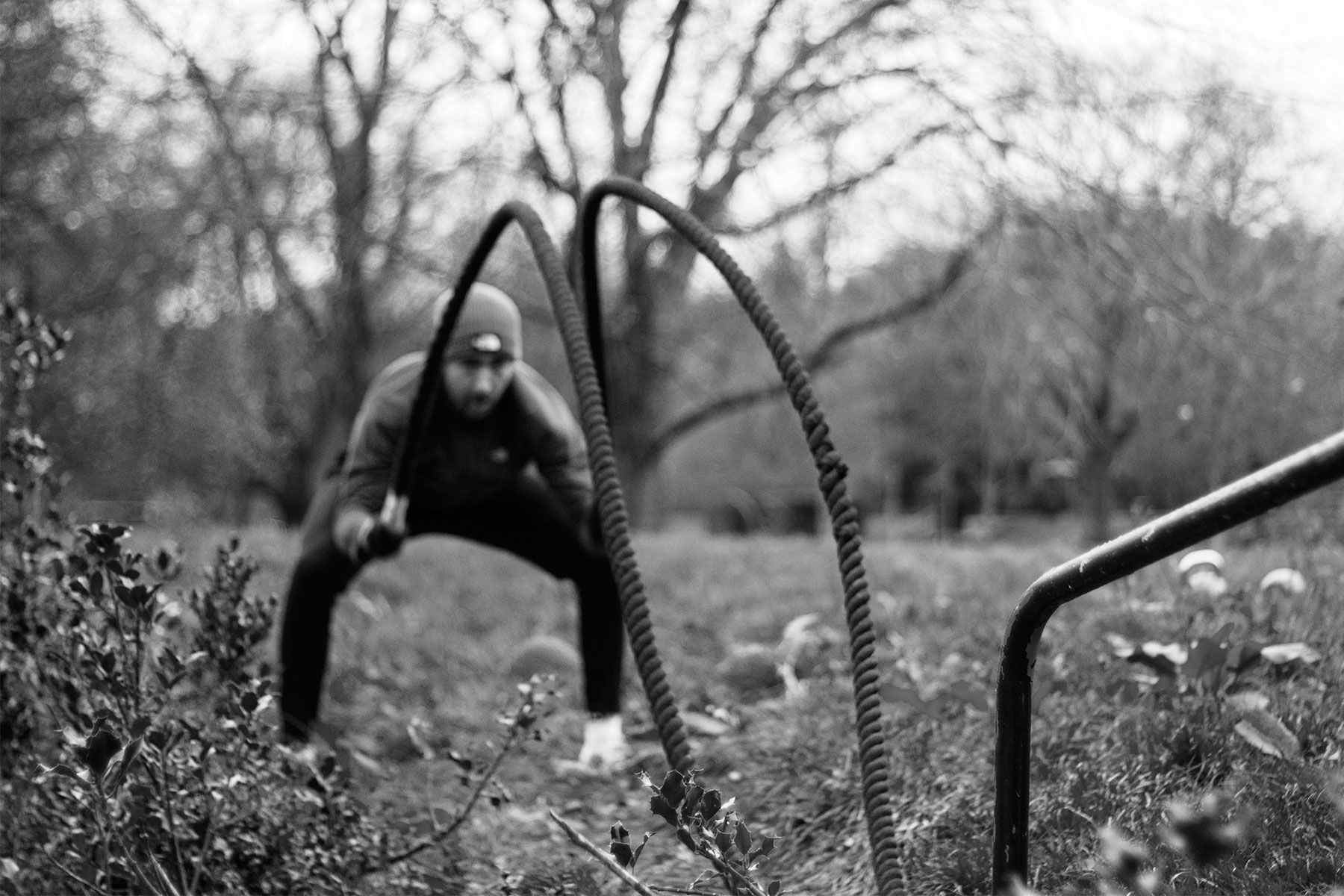
The Effects Of A Land-Based Home Exercise Program On Surfing Performance
How do you improve your surfing? You get in the water and surf as much as possible, right?
“This study challenges the previous theory of sports enhancement where the current consensus of improving surf performance is to perform the actual sports activity more often, even though there is no evidence to support that claim,” writes Dr Jerry-Thomas Monaco, a physiotherapist and researcher at Seton Hall University, New Jersey, and lead author of the paper, The effects of a land-based home exercise program on surfing performance in recreational surfers, published this past May on T&F’s Journal of Sports Sciences.
With the importance of physical preparation for improving performance in mind, and hoping to address the lack of evidence-based recommendations for land-based training in surfing, Monaco and his team set off to investigate the efficacy of an eight-week land-based home exercise program (LB-HEP). The programme aimed to replicate surfing movements; it included flexibility exercises like ankle mobilization, dynamic movement patterns and balance exercises such as squat jumps, single-leg deadlifts, and surfer-inspired burpees.
To test the programme, twenty-two recreational surfers from New Jersey, all of whom had at least one year of surfing experience of surfing year-round, were divided into two groups: the exercise group (EG) and the control group (CG). Both groups were asked to continue surfing during the study period, but EG participants performed the LB-HEP 3 times a week for 8 weeks, whilst CG participants carried on with their usual exercise.
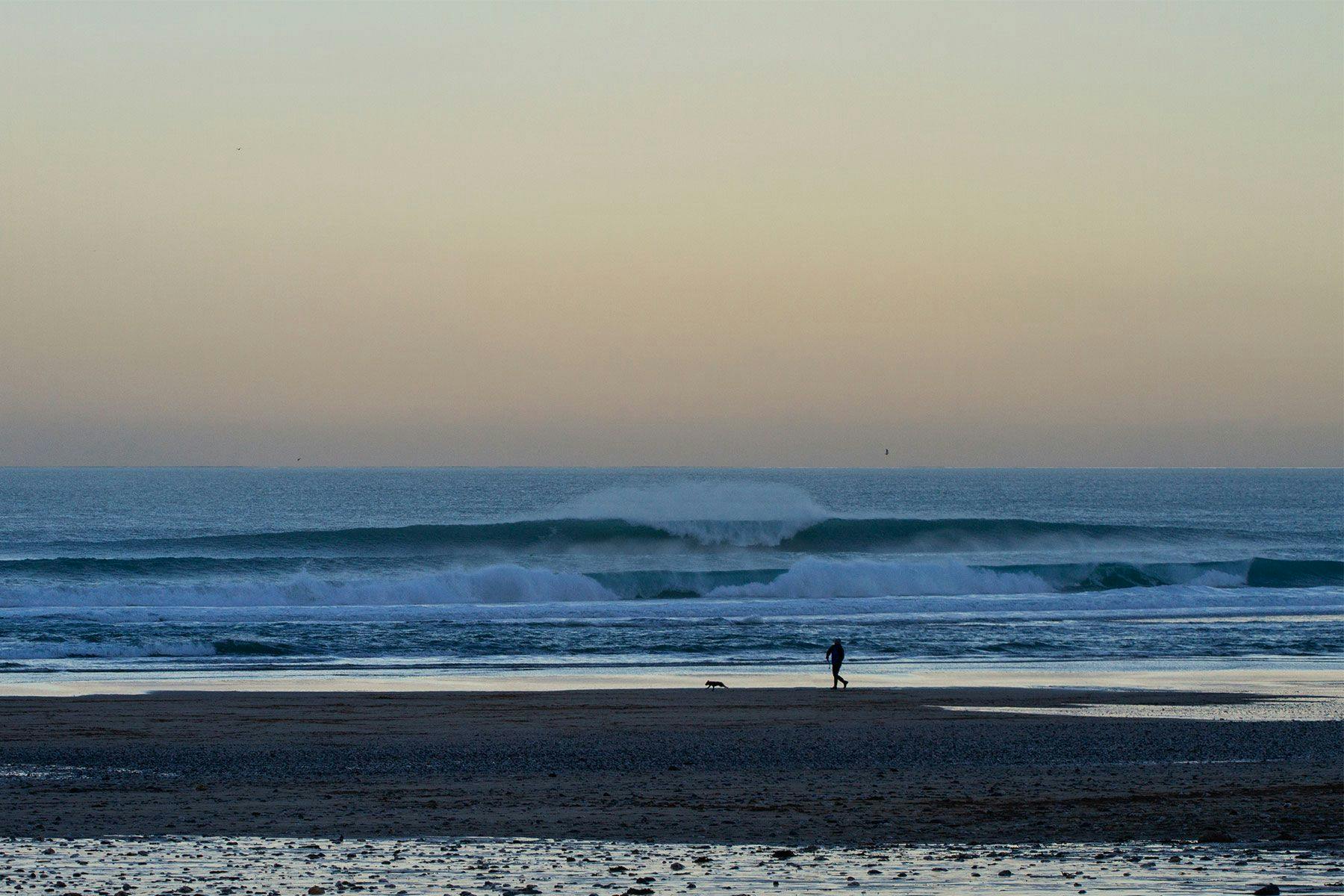
Outcomes were measured via the Surfer’s Performance Questionnaire (a subjective assessment where surfers use a 9-point Likert scale to rate how they currently perform on key elements such as catching a wave, pop-up, stamina in the water, etc.) and the Trait Sport-Confidence Inventory (a series of 13 questions, rated on a 9-point Likert scale, used to assess how confident they generally feel when surfing), as well as through the following tests:
Weight-bearing lunge test: measures active dorsiflexion (foot movement towards the shin) by asking surfers to place their tested foot on the floor with the toe perpendicular to the wall and lunge forward, touching their knee to a marked line on the wall while keeping the opposite leg relaxed; an inclinometer was attached below the tibial tuberosity to record the inclination of the tibia relative to the wall;
Y-balance test: assesses dynamic postural control by having surfers perform a single-leg balance while reaching with the opposite leg in three directions. Participants placed their tested limbs on a stance platform and reached as far as possible along three plastic pipes without lifting their heels.
The modified clinical test for the sensory interaction on balance: measures postural sway in four test conditions: eyes open/closed on non-compliant and compliant surfaces for 30 seconds each;
Surfer pop-up assessment: uses an accelerometer attached to the tibial tuberosity to record the time from when the surfer initiates the pop-up to when their leading foot stabilized the landing, thus defining the start and end of the pop-up manoeuvre.
[Editor’s note: For more information on the tests, click the links above.]
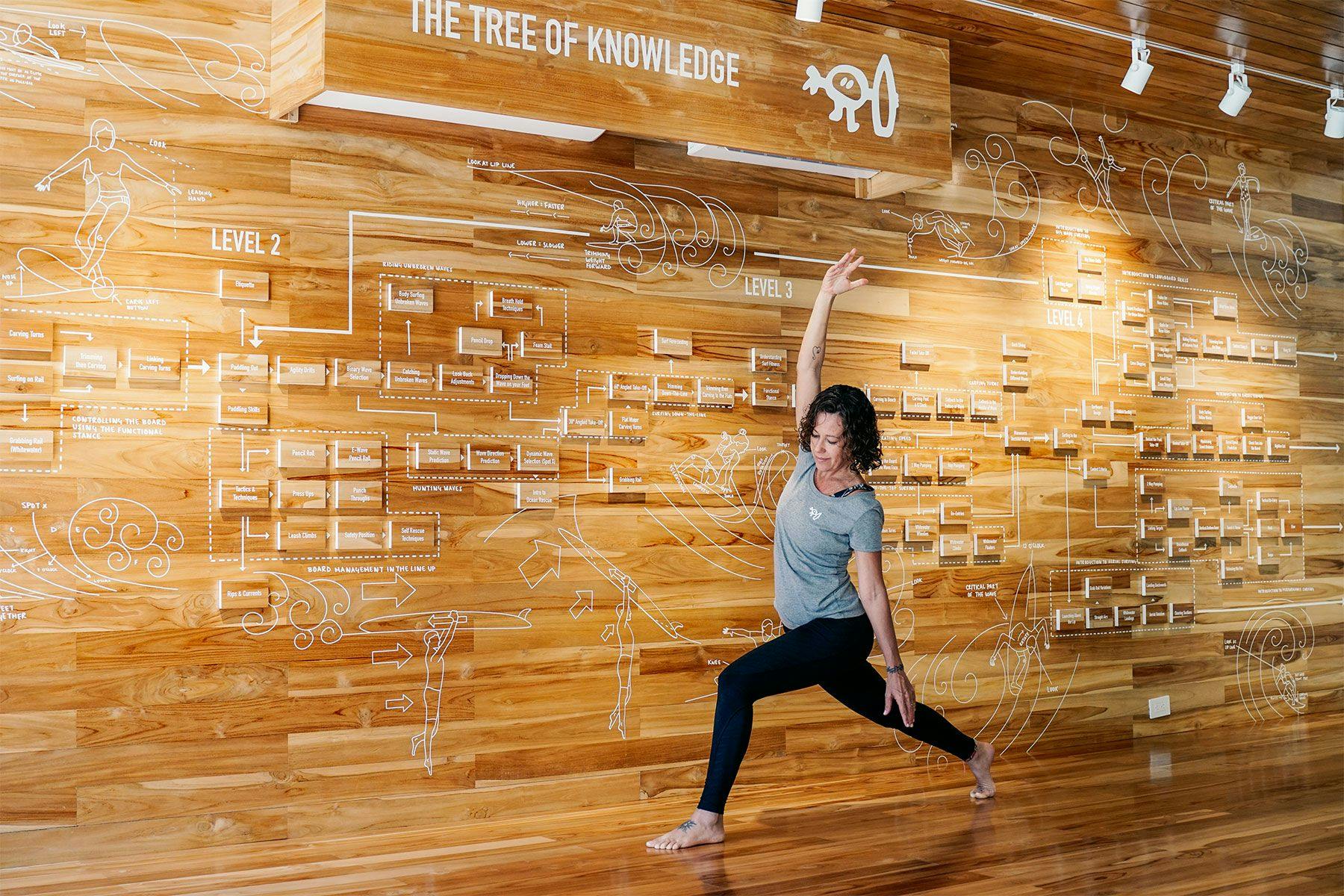
The study found a significant improvement in the pop-up time for surfers who underwent the LB-HEP, and this group also reported better overall performance in surfing components compared to the control group. Based on these results, Monaco and his team highlight that, whilst more research is needed to establish evidence-based training protocols, the incorporation of a land-based, sport-specific exercise programme that includes surfing movements can play a crucial role in improving performance demands in the water, as well as reducing the risk of injuries for surfers of all levels.
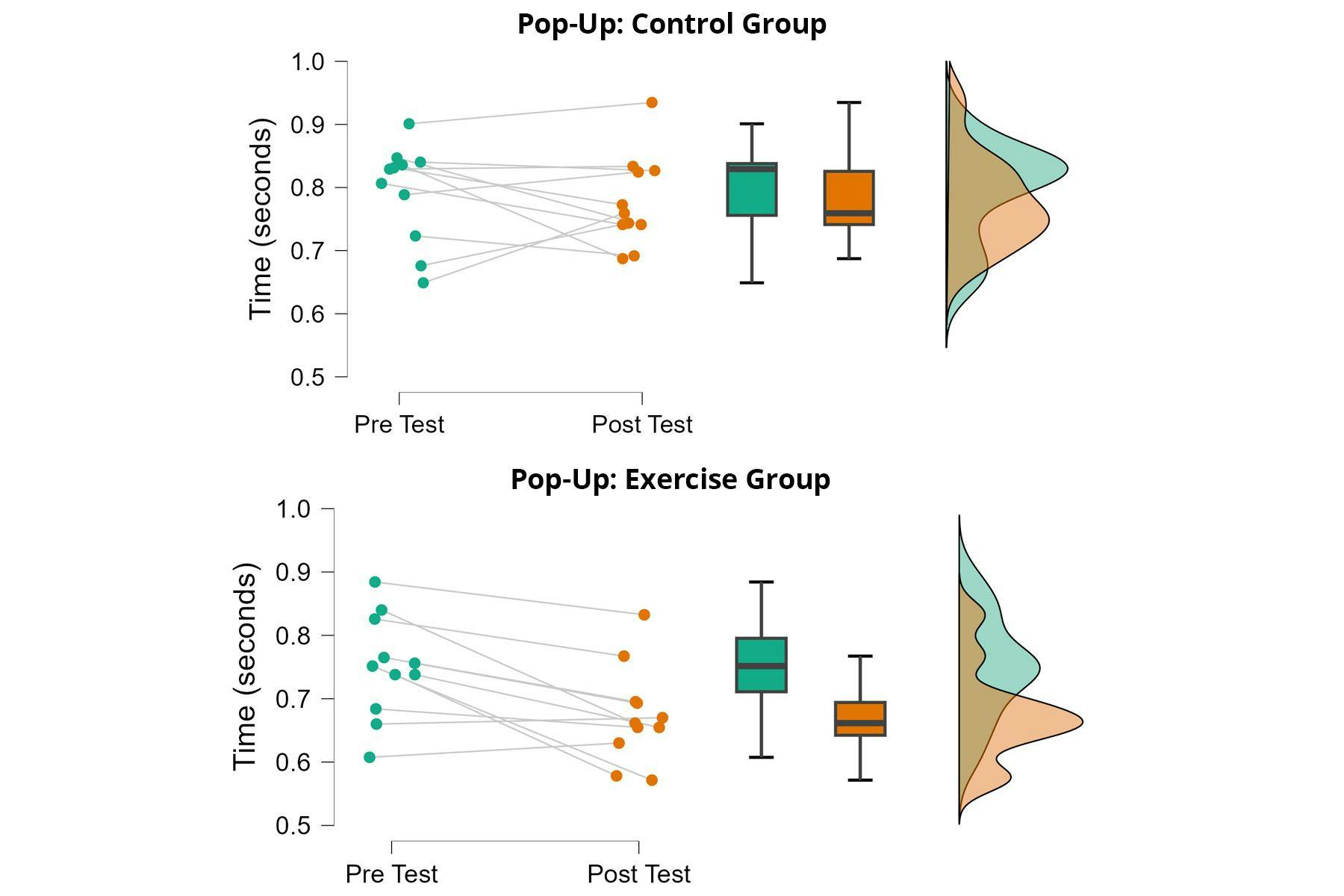
Surf Simply caught up with Dr Monaco to get some further insight into the research and hear his views on the future of land-based training in surfing.
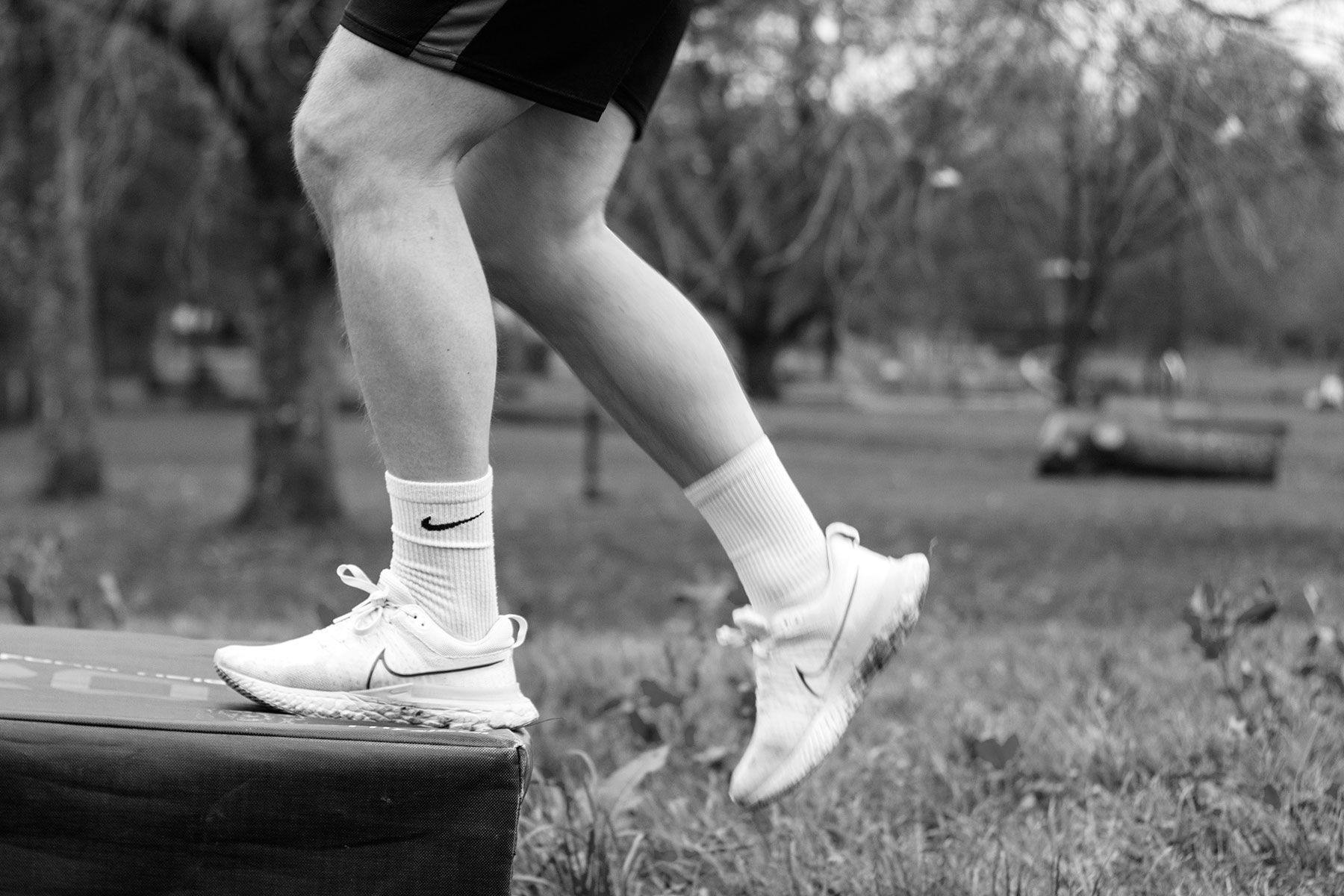
Could you please start by telling us where the idea for the study came from?
I started my PhD in Sport and Human Performance in the summer of 2018 at Rocky Mountain University, Utah. In March 2019, I took a red-eye flight home after a week-long classwork and went surfing that very day. During the session, I began wondering — after being indulged in the evidence-based practice for a week — if there is any research on how I can improve my surfing performance. That night, I searched and found very little to no evidence of the effects of land training for surfers; not to mention there were no studies that showed land training correlated to in-water performance. Hence, I found my research question.
How did you design the land-based home exercise programme used in the study?
My dissertation chair, RJ Boergers PhD ATC, was very enthusiastic about my study and guided me along this process. First, I performed a literature review of surfing movements, demands, and performance indicators. From there, we designed an initial program but we needed to make it very feasible and surfing-specific for surfers to perform. In New Jersey, surfing conditions are not consistent like California and Hawaii and our sample was year-round recreational surfers. Hence, we design a home exercise program that mimics a HIIT routine (20-30 mins) so the recreational surfer can perform independently on their own time. New Jersey surfers do not go to the gym when there are waves.
What were the key components and/or exercises included in the programme that helped make it successful?
We first examined trainable aspects of surfers which a study found (Forsyth 2019) the pop-up and landing onto the board were trainable aspects. Therefore, we included components of flexibility for the entire body and body-weight resistance exercises that were correlated with surfing movements and demands (e.g. push-ups, mountain climbers, surfer burpees, split squats). We also added postural control exercises for the wave-riding phase in surfing. Although we did not include exercises for the paddling phase, we felt that our sample already had the prerequisites of upper-body strength since they had at least one-year experience of year-round surfing. In New Jersey, most beginner and novice surfers do not surf year-round because of hazardous conditions (i.e. cold weather, winter storms, bigger swells) and required a higher level of fitness to combat these conditions, thus they need to paddle efficiently to be successful during this period.
Another component that contributed to the success of the study was the outcome measures we used that mimicked surfing demands. We used similar objective outcome measures (i.e. YBT, weight-bearing lunge test, etc.) that have been used in other surfing research. We developed a method to measure the pop-up time with an accelerometer and a subjective performance questionnaire in a Likert form to measure the demands of in-water surfing (i.e. paddling for a wave, accuracy of the pop-up, etc.). Before we did this study, we needed to validate these measures since they have never been done before. Fortunately, the measures had a good-strong agreement, thus we felt it was important that we used them in the study.
In your opinion, what was the most surprising and/or interesting finding?
First, the compliance of the surfers was very strong. I have been a physiotherapist for close to twenty years, and my patients never had the compliance that my surfers did. They were dedicated and devoted to improving their surf performance. This challenges the previous theories that surfers have a “non-committal attitude”.
Second, all subjects, despite group designation, improved on the Y-balance test that measures postural control.This means that surfing sessions (which were required from both groups), improved postural control with or without a specific exercise routine.Thus, surfing can have a therapeutic effect on postural control.Studies have shown the therapeutic effects with surfing in developmentally disabled paediatrics and post-traumatic stress individuals.
And finally, although the exercise program did not include any specific exercise for paddling, the LB-HEP group reported improvement in stamina and paddling (general and sprint).HIIT routines improve both aerobic and anaerobic capacities where there can be carry-over effects that overall improve any sport performance even when there was not a specific aim.
On the other hand, I was wondering if you could talk a bit about the limitations of the programme.
First, we cannot generalise the findings to other surf locations and regions due to the environment’s variability. Specific environmental factors influence the consistency of swell, weather patterns, water temperature, and access to surfable waves, which will likely affect the external loads encountered. Second, we only evaluated the short-term effects of an LB-HEP on surfing performance for recreational surfers and cannot be sure of a carryover response after the programme. We had sufficient power analysis which meant we had enough subjects to give us a valid result however, the sample had more less-experienced surfers (<10 years) than experience surfers (>11 years), therefore we were unable to really compare the differences in experience with surfers in regards to the exercise program.
How do you envision the practical application of your research findings in the real-world context of surfing coaching and athlete training? Are there any specific recommendations for coaches or surfers based on your study?
Surfing has become a popular watersport for recreational athletes that requires physical conditioning to enhance performance. The physical conditioning needed for surfing demands will require long-term commensuration of strength, flexibility, dynamic postural control, and both aerobic and anaerobic training to improve or maintain surfing performance if the client/surfer prefers that. There have been studies that show that land training has transferability in improving performance factors with swimmers and water polo athletes; our study supports the transferability to surfers' in-water performance. I highly recommended surfers of all levels to engage in land training, especially in areas where surf conditions are not consistent. For coaches, I recommend they understand the demands of surfing and the level of the surfer, and examine their client’s physical capabilities associated with surfing demands to design an effective training program.
Are there any plans for future research to explore the effects of prolonged or modified exercise programs on surfing performance?
Future research should examine the effects of the LB-HEP with a longer post-study follow-up (eight weeks or greater) in more surfing-consistent regions to further validate the programme’s effectiveness. Since the authors of the LB-HEP study cannot generalise the findings to other surf locations due to the environment’s variability, replication of this study should take place in other regions where surfing is accessible as well as investigating the effects of land-based exercise programme in a more homogenous (i.e. beginners) group.
How do you see the field of strength and conditioning for surfing evolving in the future?
Wow…there are endless possibilities now with surfing.Due to the advancements in surf technology; beginner-friendly foam boards, advances in wetsuits, wave pools in locations where there are not any surfing conditions and the popularity of the sport on social media, have exposed this sport to other athletes.Hence, there is a potential increase in client referrals to strength and conditioning coaches, especially those who have a background in training surfers.Since surfing is non-seasonal, surfers partake year-round in their sport which will involve recovery and injury prevention.That will be another aspect that strength and conditioning coaches might examine.
*****
The author and Surf Simply would like to thank Dr Jerry-Thomas Monaco for sharing his insights with us.